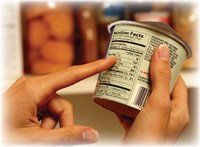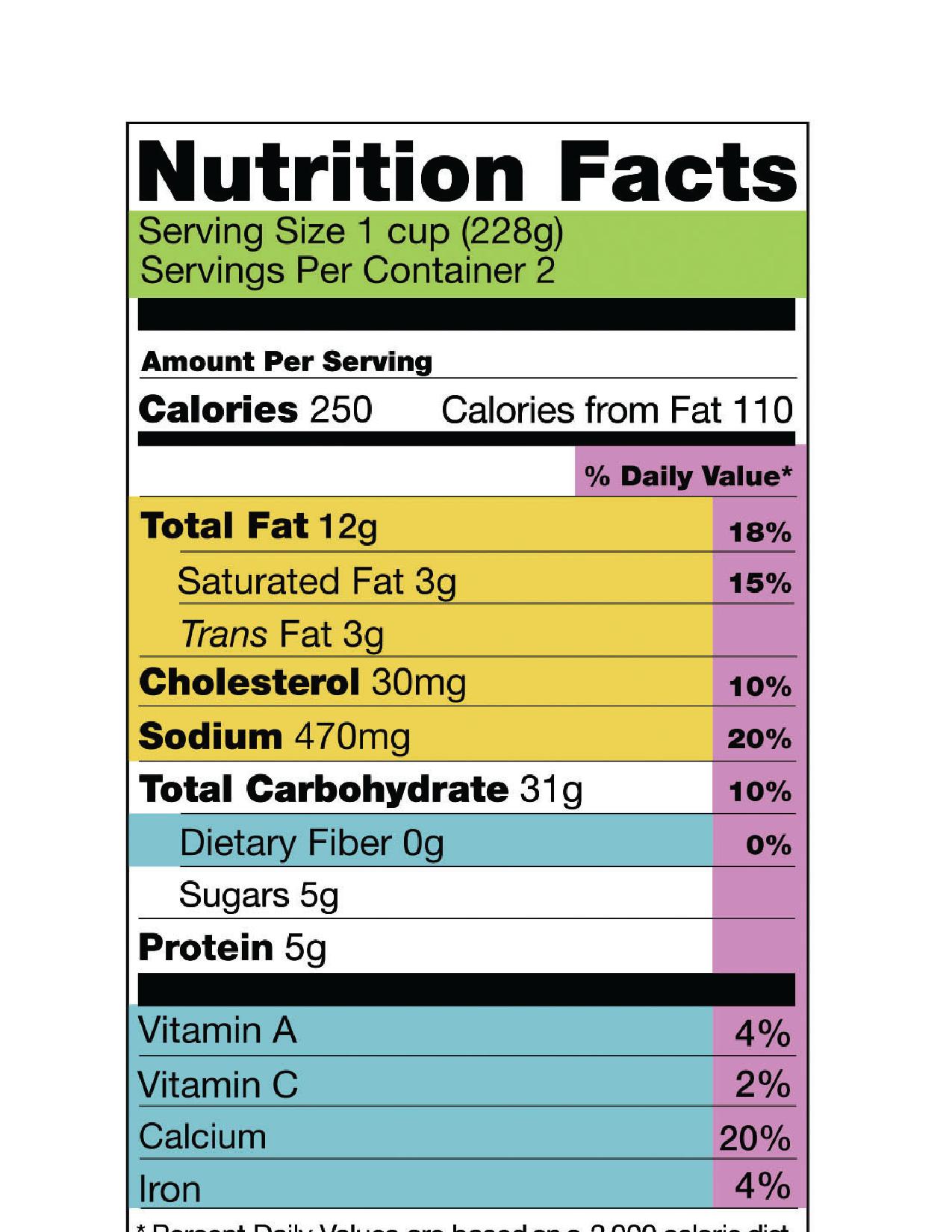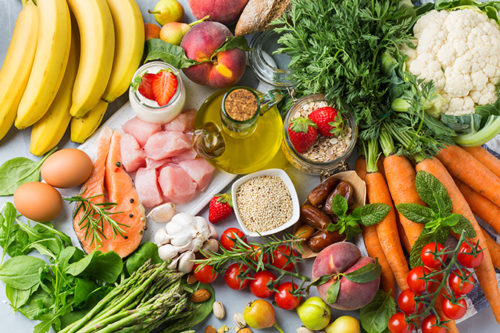Yes, we’ve all seen those funny-looking charts, usually hiding on some remote side of a food package and looking quite drab compared to the mouth-watering graphics and product descriptions splayed across the rest of the box.
 It’s no wonder that many of us ignore this dry list of nutritional information, which the US government requires on all food products. Deciphering just what it means can frustrate the most well-intentioned person trying to adopt or maintain a healthy diet.
It’s no wonder that many of us ignore this dry list of nutritional information, which the US government requires on all food products. Deciphering just what it means can frustrate the most well-intentioned person trying to adopt or maintain a healthy diet.While the USDA is working on making the labels easier to read (yes, the Europeans have us beat so far in this contest!), here are some tips on how to get the most out of scanning food labels as well as nutrition guidelines, according to the American Heart Association (www.heart.org) and American Diabetes Association (www.diabetes.org). Note that you and your doctor are the best judges as to the diet best for your age, weight, physical activity level and medical condition.
 Serving Size: (purple area on the illustration): This is where manufacturers often depart from reality and where also checking the Servings per Container comes in handy. After all, can one bag of tortilla chips really feed 10 people? Judge what you think is a reasonable serving size for you and your family members and then multiply the rest of the values and percentages on the package by this number of servings to assess what the true nutritional benefits – or hazards—are.
Serving Size: (purple area on the illustration): This is where manufacturers often depart from reality and where also checking the Servings per Container comes in handy. After all, can one bag of tortilla chips really feed 10 people? Judge what you think is a reasonable serving size for you and your family members and then multiply the rest of the values and percentages on the package by this number of servings to assess what the true nutritional benefits – or hazards—are.For example, in the spirit of fall, 1 serving of Ben & Jerry’s Pumpkin Cheesecake Ice Cream with Graham Cracker Swirl is a measly ½ cup, which has 15 grams of fat (7g saturated). Unless you have the willpower of Gandhi, you’ll probably indulge in closer to 1 cup of ice cream, or 2 servings, totaling a whopping 30 grams of fat. You may feel less guilt grabbing a low-fat frozen yogurt or sorbet instead!
Calories: Again, this is based upon the serving size. You want to decide how many calories is your daily limit so that the % (Percent) Daily Value makes sense. Most food packages list values for 2,000 calorie diets (see the footnote on the label to check this), but that would be too high for most average kids and sedentary adults: an active 3-year-old only needs about 1,000 calories each day; a sedentary teenage girl about 1,800. For a handy online tool to determine how many calories are recommended for your age and physical activity level, as well as nifty example meal plans, go to: http://www.choosemyplate.gov/myplate/index.aspx.
Calories from Fat: While our bodies benefit from vitamins in most fats, you want to limit the amount of fat to no more than 30% of your total daily calories. That means for a 2,000-calorie diet, no more than 600 calories should come from fat.
Fat, Cholesterol and Sodium, Oh My! (yellow area): Consuming too much of these is often what gets most of us in trouble and where doing some estimating – multiplying values by the number of serving sizes that are typical for you – comes into play. You’ll soon notice when skimming labels that foods that are more processed are often high in 2–if not all 3– of these. Have you ever had low-fat soup loaded with salt to compensate? In addition to the Recommendations provided (below), aim for:
- Low or no saturated and trans fats – saturated fats are solid at room temperature – think Crisco – versus the healthier fats that are liquid at room temperature, including olive oil.
- Low or no added sugars – look for “hidden” equivalents to sugar, including high-fructose corn syrup, dextrose and anhydrous dextrose, fructose, honey, malt syrup, nectar, sucrose, and sugar cane juice. Some may seem more natural and therefore healthier than others, but your body processes them all the same – sugar is sugar, even though it goes by many different names.
While many of us may think that these three are what give food its great taste, all that indulgence comes at a cost. Mountains of studies have shown that eating too much of these increases your risk of a whole host of maladies, including heart disease and other chronic diseases, some cancers, and high blood pressure, among others. Great tasting food doesn't need any of these: rediscover the joys of eating vegetables and fruits that are still recognizable, whether raw or steamed with herbs, for example.
The Good Stuff – Fiber, Vitamins, and Minerals: (blue area): When comparing foods at the grocery store, go for the item not only low in the bad stuff, but high in essential vitamins, minerals and fiber.
Recommendations in a Nutshell: For those of you who’ve yearned for one handy list of what’s recommended to have a healthy diet, below are the guidelines for most kids and adults, as well as special guidelines for diabetics. Again, be sure to discuss with your doctor or other healthcare and nutrition experts who can tailor what’s best for you based upon your health condition, family history and other factors.
Fat
Per serving: less than 3 grams
Daily amount:
For most adults: less than 70 grams, 44-77 grams
For diabetics: 10-15 grams
For kids: 40-80 grams depending on age and gender
Salt
Per serving: 140 mg or less
Daily amount:
For most adults: 1,500-2,300 mg or less
For kids: 1,200-2,400 mg or less
Fiber
Per serving: 3-5 or more grams
Daily amount:
For most adults: 25+ grams
For kids: 20-30 grams
Protein
Daily amount:
For most adults: 50 grams
For diabetics: 15-25 grams per meal
For kids: 20-35 grams
Sugar
Daily amount:
For most adults: less than 24-36 grams
For kids: less than 20 grams
Carbohydrates
Daily amount:
For most adults and kids: 45%-65% of calories, or about 900 to 1,300 calories daily for a 2,000 calorie diet
For diabetics: 45-60 grams per meal
For more tips on adopting a healthy lifestyle, including simple, inexpensive recipes and fun ways to get more active, download free copies of the Oasis CATCH Healthy Habits Healthy Living Guides here.







Leave A Comment
You must be logged in to post a comment.